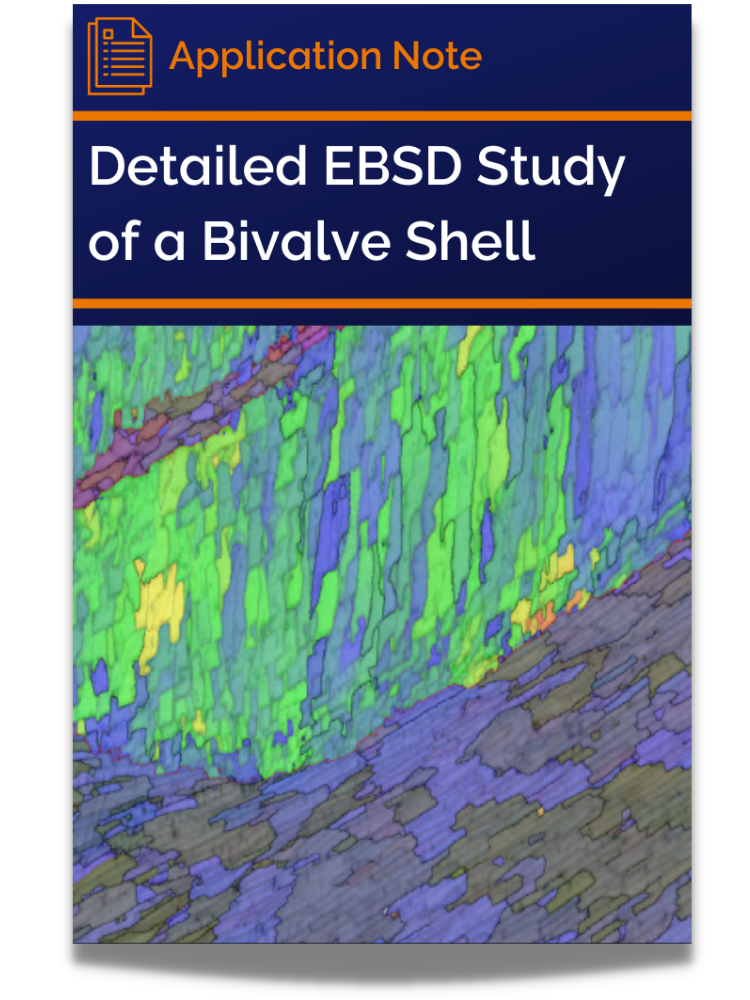Detailed EBSD Study of a Bivalve Shell
The structure of natural shell samples has for many years been of significant interest, not only to researchers in the biological sciences but also to material scientists. This is primarily because the shells often have physical properties far exceeding those of their constituent minerals: in particular the mother of pearl structure, or “nacre”, consists of small, interlocking tablets of aragonite (orthorhombic CaCO3) separated by organic matrix membranes. Nacre has a very high strength when compared to single aragonite crystals and researchers are mimicking this structure in order to produce similarly high-strength materials. The fact that the aragonite tablets have a thickness similar to the wavelength of visible light (e.g. ~ 500 nm) results in nacre’s characteristic iridescence but poses significant challenges for effective microstructural characterisation.
By downloading this application note you will see:
- How the Symmetry EBSD detector is ideal for analysing challenging beam-sensitive and fine grained structures such as aragonite nacre
- The results from routine analyses of calcite-aragonite interfaces in the shell of the common mussel
Get my copy!




